Grado Signature HP100 SE review: uncomplicatedly brilliant
Grado's 'happy birthday' headphones sound superb

At this sort of money it isn’t enough for a pair of headphones to sound uncomplicatedly brilliant – which is a pity for the Grado Signature HP100 SE, because ‘uncomplicatedly brilliant’ is how they sound. Because where pride of ownership and perceived value are concerned, they still have a way to go.
-
+
Exquisitely poised, detailed and engaging sound
-
+
Dynamic and articulate
-
+
More comfortable than they look
-
-
Perceived value is not especially high
-
-
Won’t suit the smaller-headed
-
-
Need additional cable options right now, not later
Why you can trust T3

Grado Labs reckons its founder Joseph Grado invented the whole idea of the properly high-end headphone when he developed and launched the Signature HP1 over 30 years ago.
In recognition both of this feat and of what would have been Joseph’s 100th birthday, the company has launched these Signature HP100 SE headphones – and it promises a contemporary version of a classic, with fresh design elements at every stage.
Promises, promises. So can the Signature HP100 SE blaze the sort of trail their illustrious predecessors managed and be considered among the best wired headphones in existence?
How much do the Grado Signature HP100 SE cost?
The Grado Signature HP100 SE wired over-ear open-backed headphones launched in late November 2024. In the United Kingdom they currently sell for £2795. In the company’s native United States they’re a slightly less punchy $2495. Australia, meanwhile, sees them cost around AU$3999 – if you can find a pair, anyway.
I hardly need to say that this is a lot of money for a pair of hard-wired, over-ear, open-backed headphones – but equally, the Grado are far from short of competition. Similarly priced alternatives from the likes of Austrian Audio, Final Audio, Focal and Yamaha are available – and that’s just for starters...
What's special about Grado's Signature HP100 SE?
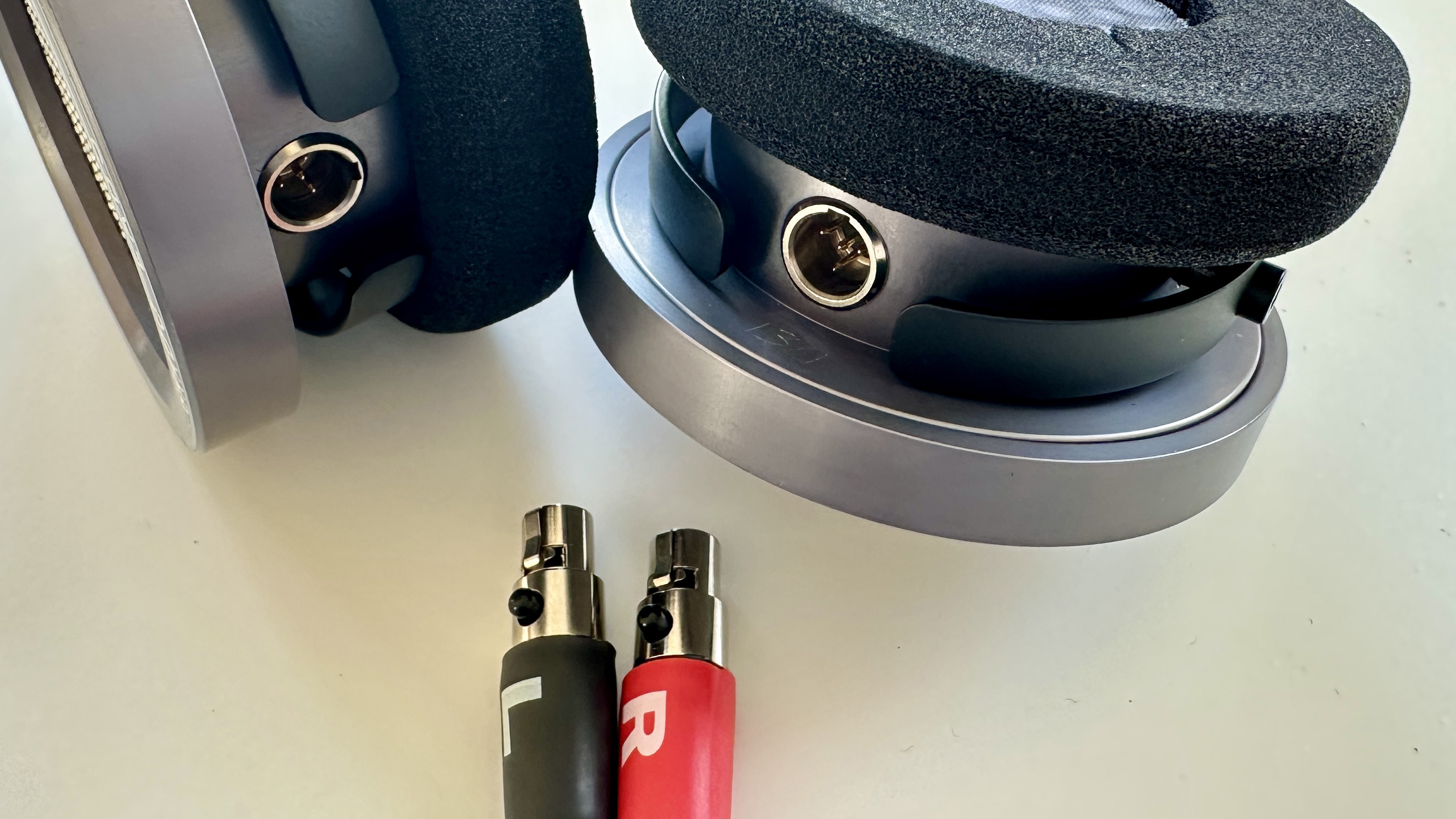
For the first time, here’s a pair of Grado headphones that features detachable cables. This is unarguably a good thing, especially when you consider the business end of the cable here features a 6.3mm unbalanced connection.
Grado is making vague noises about alternative cables with different terminations, but details as to when these might be available and what they might cost are extremely thin on the ground. Each earcup requires wiring, so the other end of the cable splits into ‘left’ and ‘right’ four-pin mini-XLR connections.
The cable feeds a pair of newly minted, completely redesigned speaker drivers. Measuring 52mm across, each cone is of paper composite construction and is backed by a rare earth alloy high-flux magnetic circuit and new voice coil made from copper-plated aluminium.
This arrangement not only results in a claimed frequency response of a touch over 3Hz to more than 51kHz, but is designed to produce optimal dynamic and transient response, spacious and well-defined soundstaging, and low distortion combined with high refinement. Which all looks very good when it’s written down, doesn’t it?
How does the Grado Signature HP100 SE sound?
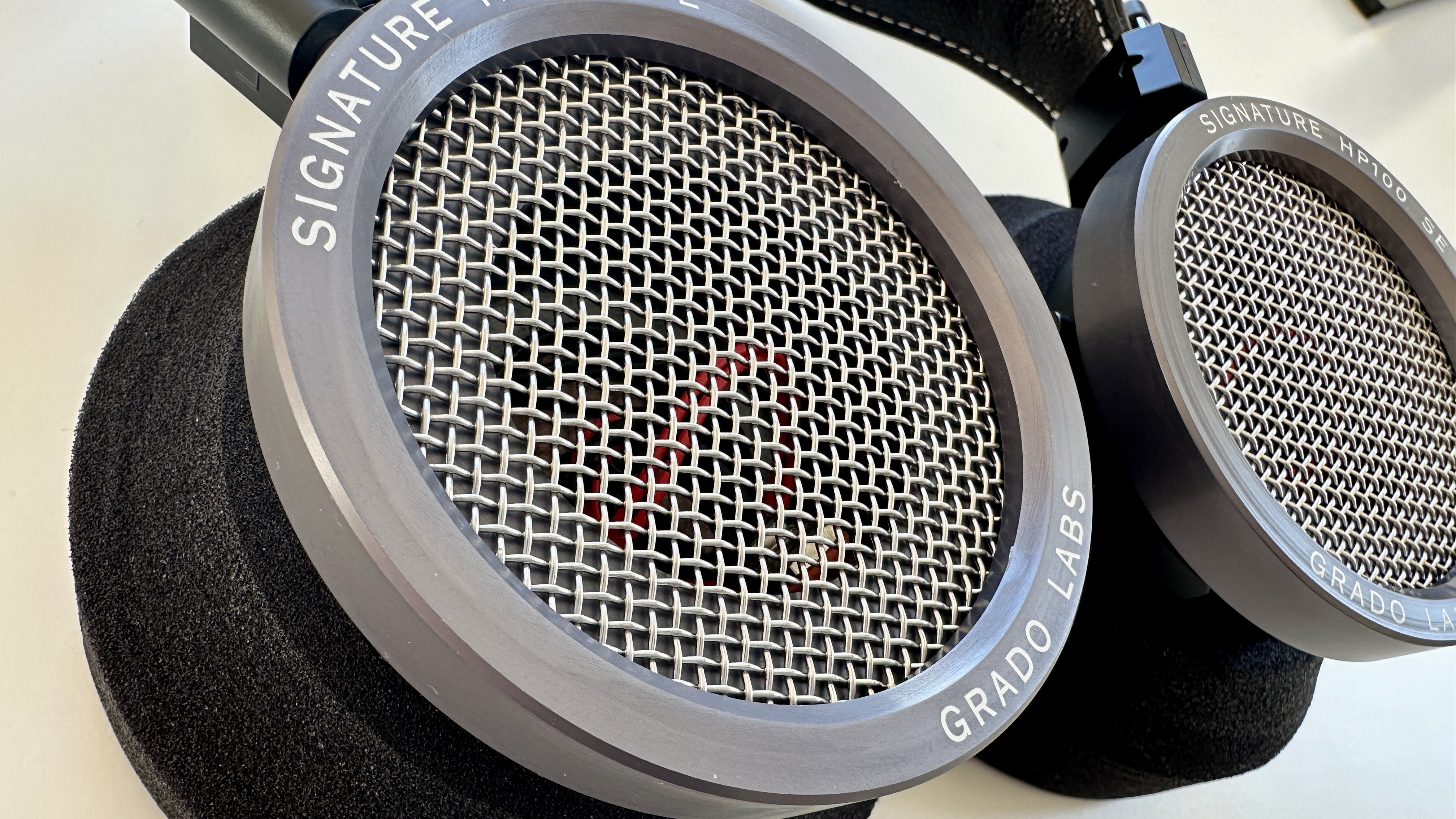
Because the HP100 SE have a 6.3mm unbalanced termination, they’re one of the few pairs of wired headphones I’ve tested lately that can’t be connected to my FiiO M15S digital audio player. Still, wiring them to an iFi iDSD Diablo 2 headphone amplifier that’s joined to an Apple MacBook Pro loaded with Colibri software isn’t a bad alternative.
And with some genuinely high-resolution content playing (thank you, Colibri, not Apple), the little niggles about materials and perceived value go all the way out of the window. The Grado Signature HP100 SE are a thrillingly complete listen.
From the deep, textured, and straight-edged lowest frequencies to the shining, substantial and detailed highest, and at every point in between, the Grado are balanced, insightful and convincingly musical performers. Their tonal balance is carefully neutral, their frequency response completely smooth and even. No matter the sort of music you’re listening to, no matter its source, the HP100 SE deliver it in confidently unified and utterly convincing fashion.
They hit with respectable determination at the bottom of the frequency range, but these headphones are not mindless thumpers. Bass sounds are textured and varied, with plenty of light and shade revealed – and the Grado control the bottom end with such authority that rhythmic expression is always just somehow correct. Languid, hectic, club-footed… it doesn’t matter the nature of the music, the HP100 SE communicate its rhythm in the most persuasive manner.
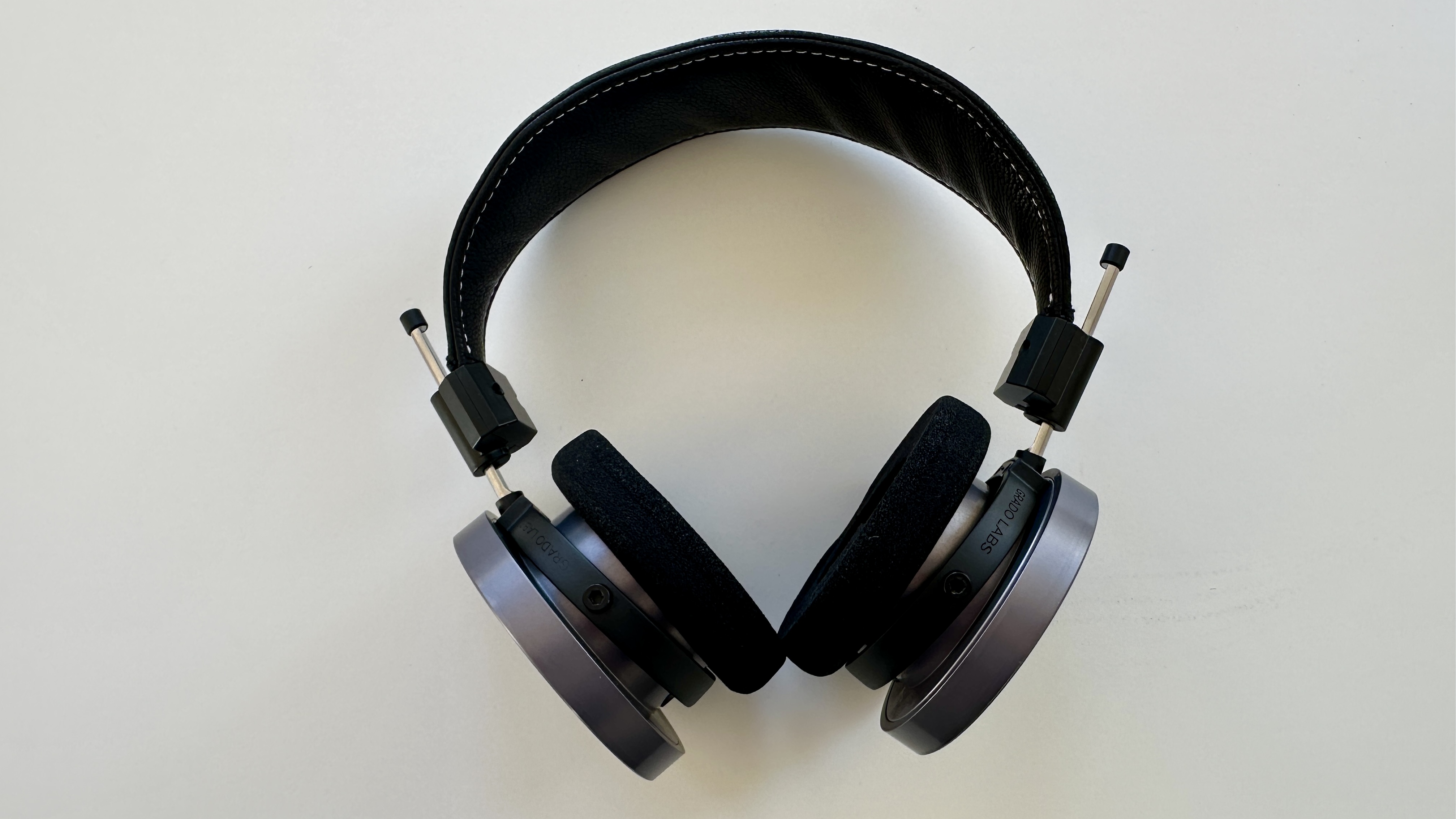
The midrange is lavishly detailed, too, and the idea that you’re not getting a complete description of a singer’s technique, attitude and intention is fanciful. There’s just as much information loaded onto the top of the frequency range, too, and the brilliance of the treble reproduction is nicely balanced against a tangible sensation of substance. At every turn, no detail is too fleeting or too minor to elude the Grado – and they do a spectacular job of putting even the most transient occurrences in a recording into proper context.
Best of all, though, is the fact that this forensic attitude is not at the expense of engagement or excitement. Yes, the HP100 SE can peer deep into a recording and let you know exactly what’s what – but their musicality, their energy and the vibrant nature of their reproduction leaves you in no doubt that, first and foremost, music is entertainment.
What else? Well, there’s an absolute bucket-load of dynamism available – and in every sense. So if the orchestra shifts from ‘single contemplative woodwind instrument’ to ‘everyone trying to outdo everyone else at the climax’, the distance the Grado can put between these two positions is prodigious. And when that single woodwind is playing, the harmonic variations are identified in an almost casual manner.
Basically, the Grado Signature HP100 SE have, in performance terms, what sportsfolk like to call ‘an all-court game’. On a pound-for-pound basis, they’re among the very best headphones around.
What's the HP100 SE's design all about though?
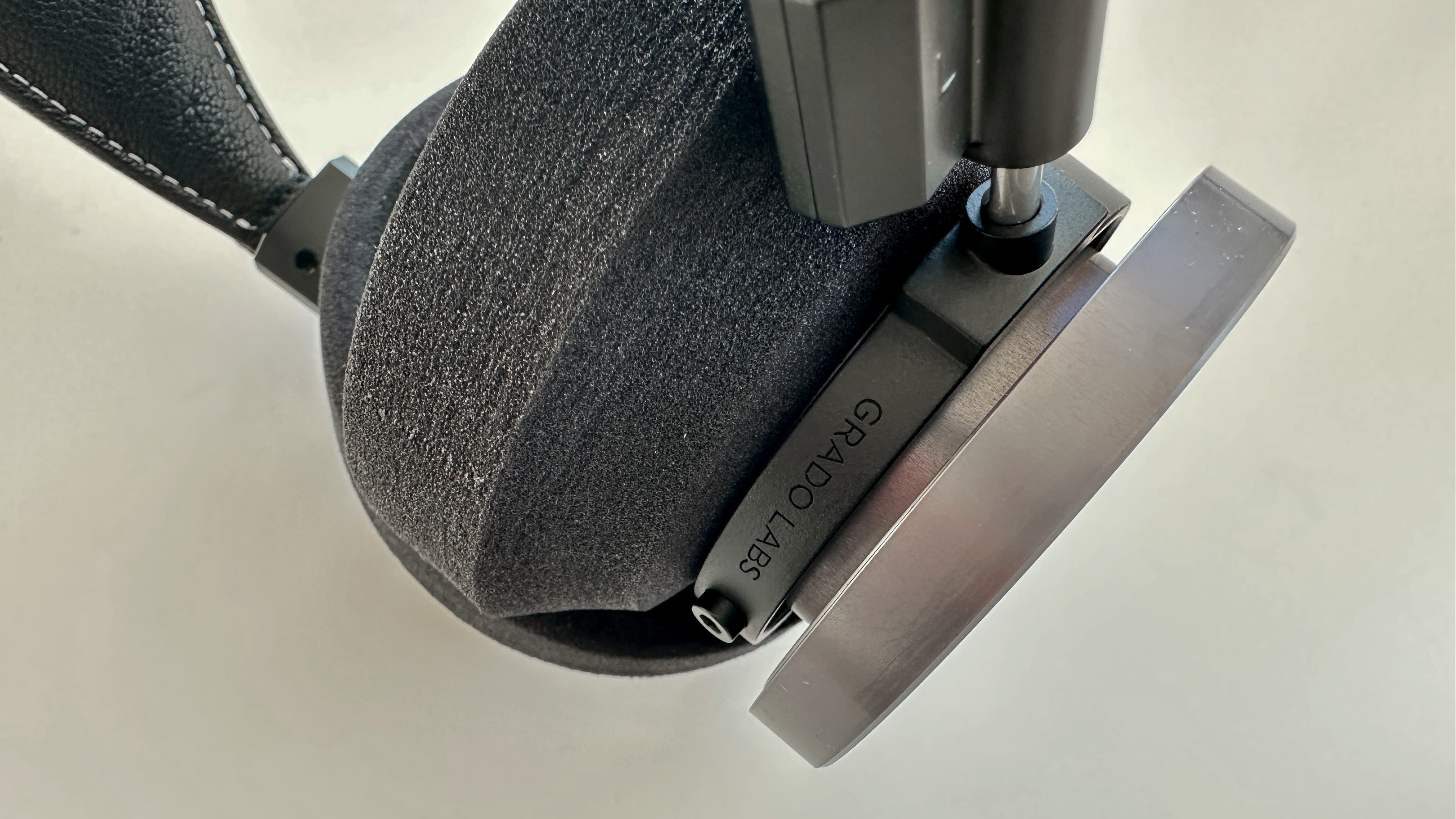
Some of the Signature HP100 SE design is a departure for Grado. At a glance, though, you’d be hard-pressed to identify exactly what these design changes are – because these headphones look very much like Grado business as usual, for better and for worse.
The housings around the edge of the earcups are made of individually milled, treated aluminium – they’re in a finish called ‘space grey’, and are engraved with some branding and the model name.
The headband features 50% more padding than previous Grado models – that's not to say it’s especially generously padded, you understand. Still, a 50% increase in comfort is not to be sniffed at. And the cable is of a softer, but no less durable, braided finish than previous Grado products, and promises better flexibility and lower weight – but then it would have been difficult to find a less flexible, heavier cable in all of headphone-land than the one supplied with previous high-end Grado designs.

Otherwise, there’s not a lot to differentiate the Signature HP100 SE from Grado’s older premium models. They arrived fitted with the big, raw foam ‘G’ cushion earpads – they’re eminently fit for purpose, but hardly the last word in luxury – and a pair of the smaller ‘F’ cushions is supplied in the packaging. The idea is to achieve your preferred sonic balance, says Grado, but it also means you’re offered the choice between ‘too much earpad’ and ‘not quite enough earpad’.
Headband adjustment is achieved using the long-serving ‘friction pole’ arrangement. It’s perfectly adequate in the way it functions – although the Signature HP100 SE are likely to prove too large for the smaller-headed among us – but there’s no denying that it’s rather agricultural and certainly not the sort of methodology you might be expecting from a pair of headphones costing the thick end of three grand. Still, a bit of cachet is clawed back by the fact the Signature HP100 SE are assembled by hand at the Grado facility in Brooklyn.
Grado Signature HP100 SE review: Verdict
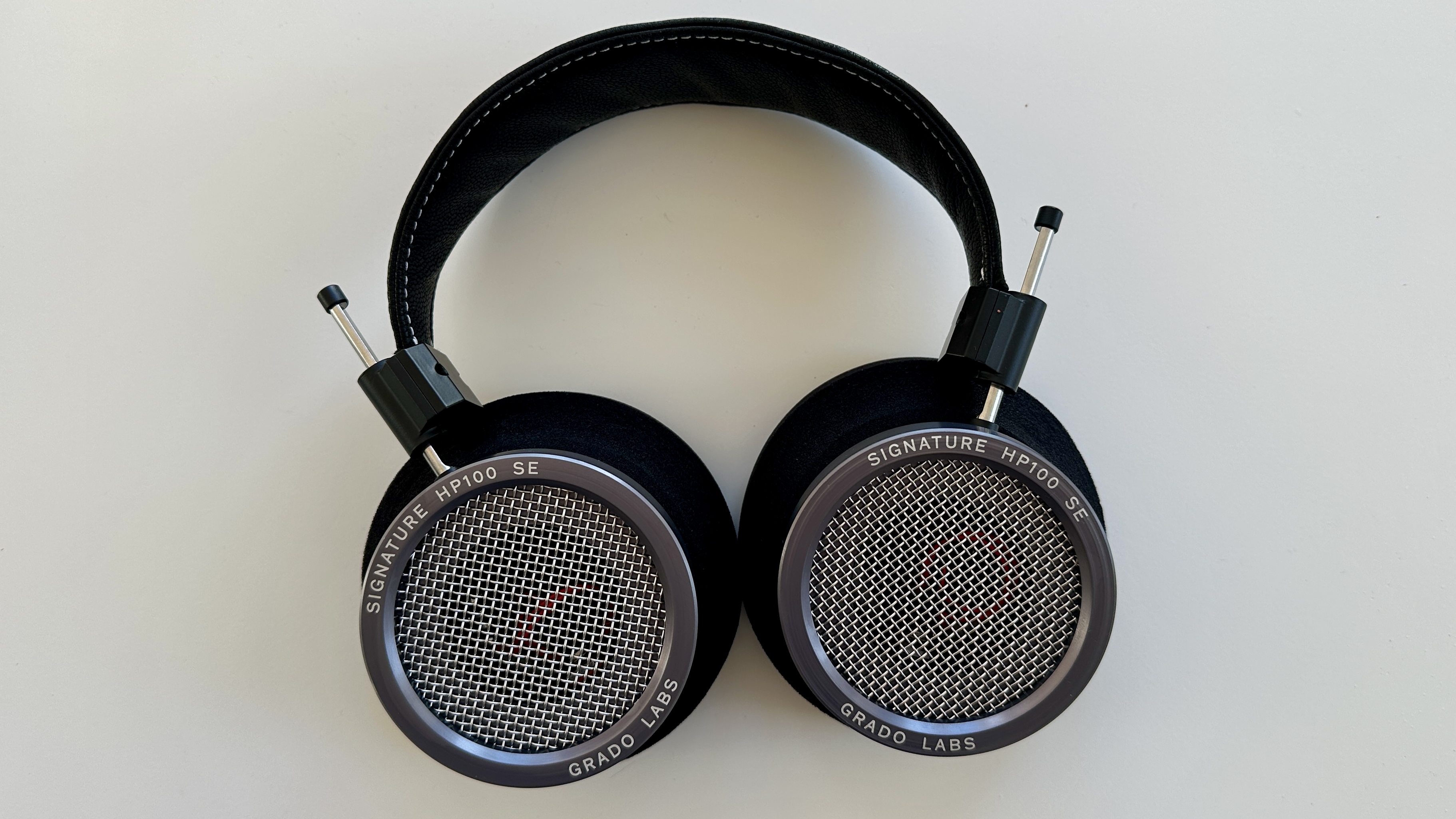
If an appraisal of a pair of headphones began and ended with the way they sound, the HP100 SE would already have taken their seat at the top table.
But there’s more to it than audio performance when you’re contemplating spending this sort of money on headphones, and where the peripherals are concerned the Grado are on slightly shakier ground.
Still, I can't emphasise enough that the Grado sound uncomplicatedly brilliant – you'll just need to wrap that up in the context of pride of ownership and perceived value.
Also consider
You can spend considerably less than this on a pair of Meze Audio Liric 2 and get yourself a pair of great-sounding headphones that feel (and smell) almost as good as they sound.
Or you could nudge a little closer to Signature HP100 SE money and get yourself a pair of Austrian Audio The Composer – again, great sound and no compromise where materials or perceived value is concerned.
The same is true of the Focal Stellia: excellent sound, a very agreeable product in visual and tactile terms. Different sounding to the Grado, certainly, but not necessarily 'better' – depending on your preferences.
Sign up to the T3 newsletter for smarter living straight to your inbox
Get all the latest news, reviews, deals and buying guides on gorgeous tech, home and active products from the T3 experts
Simon Lucas is a freelance technology journalist and consultant, with particular emphasis on the audio/video aspects of home entertainment. Before embracing the carefree life of the freelancer, he was editor of What Hi-Fi? magazine and website – since then, he's written for titles such as Wired, Metro, the Guardian and Stuff, among many others. Should he find himself with a spare moment, Simon likes nothing more than publishing and then quickly deleting tweets about the state of the nation (in general), the state of Aston Villa (in particular) and the state of his partner's cat.
You must confirm your public display name before commenting
Please logout and then login again, you will then be prompted to enter your display name.
-
 Polar’s new subscription feature lands in the shadow of Garmin’s Connect+ rollout
Polar’s new subscription feature lands in the shadow of Garmin’s Connect+ rolloutPR genius or timing disaster? Polar’s new Fitness Programme adds adaptive training to its ecosystem
By Matt Kollat Published
-
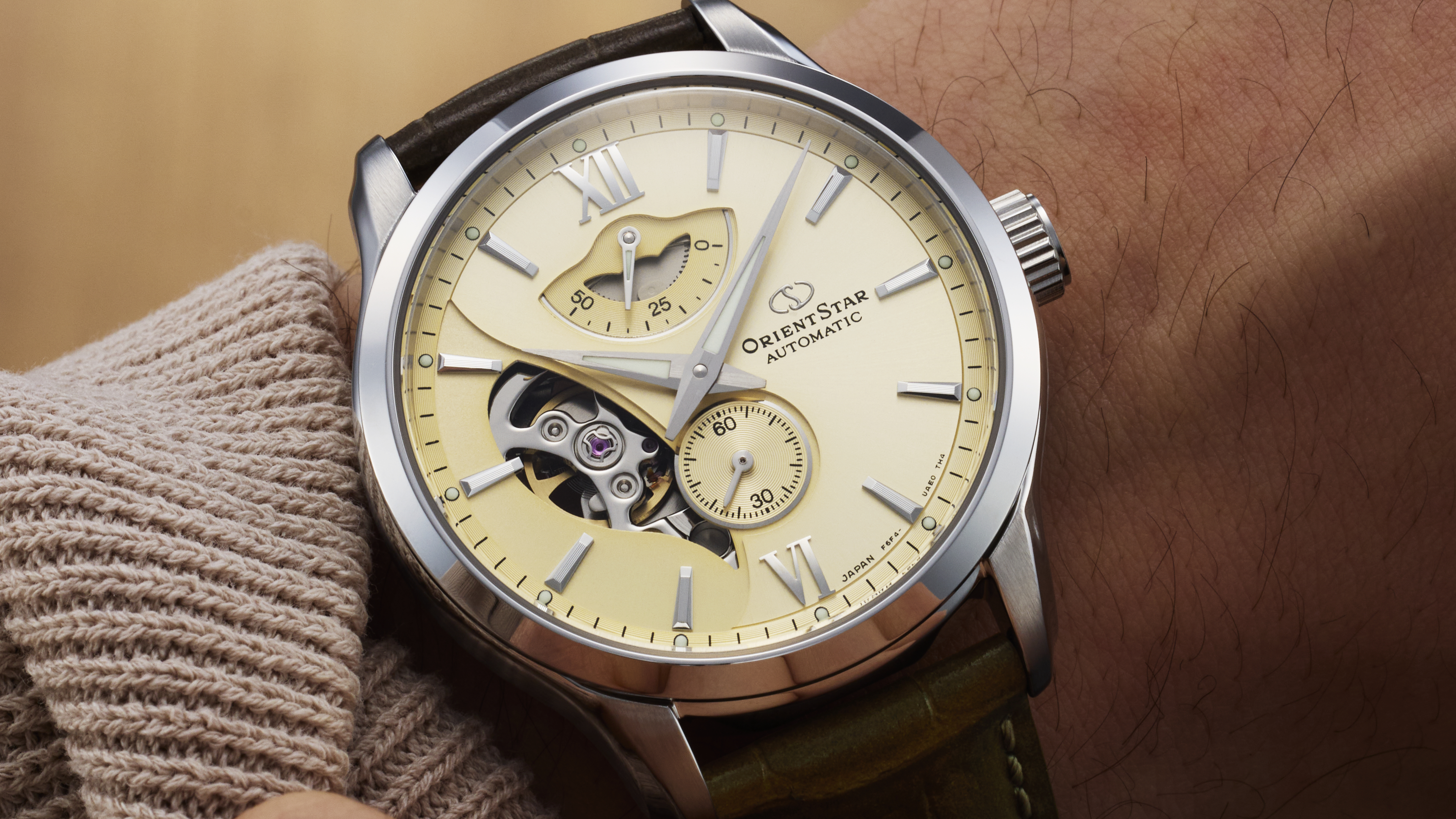 New Orient Star watches offer a glimpse of the magic within
New Orient Star watches offer a glimpse of the magic withinThere are two new skeleton pieces
By Sam Cross Published
-
 Netflix's most surprising 100%-rated sci-fi series returns with gorgeous trailer
Netflix's most surprising 100%-rated sci-fi series returns with gorgeous trailerLove Death + Robots is back for more
By Max Freeman-Mills Published